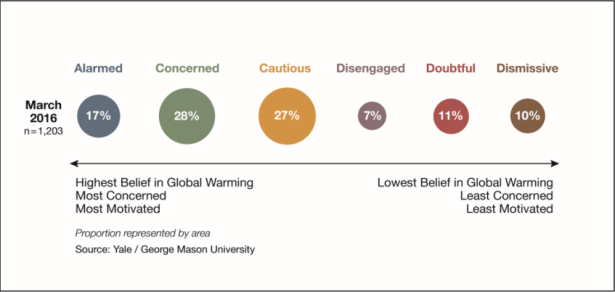This post comes from the Artists and Climate Change Blog
Our Renewable Energy Artworks series continues this month with an introduction to the prolific Dutch artist/architect/innovator Daan Roosegaarde, a self-described “futurist-focused-on-the-present†and founder of Studio Roosegaarde based in Rotterdam, with a new satellite “pop-up†studio in Shanghai.
It’s hard to keep up with Daan Roosegaarde, the internationally acclaimed visionary creative change-maker whose nature-driven social design lab, Studio Roosegaarde, functions as an interactive incubator to create site-specific installations exploring the dynamic relation between people, technology and space.
Fresh on the heels of his TED2017 lecture last month in Vancouver, Roosegaarde just won yet another international award, this time for his mind-bending Windlicht (Wind Light) project, eloquently described by one spectator as “jumping rope with the windâ€Â in the video below:
Inspired by the UNESCO World Heritage Site of Kinderdijk, one of the Netherlands’ most popular tourist attractions where 19 windmills were built between 1738 and 1740 to help manage water levels, Windlicht celebrates the invisible beauty of clean energy while creating a “missing link between the Dutch and the beauty of our new landscape.â€
According to Slate, Roosegaarde worked with a team of designers and engineers to create special software and tracking technology to detect the movement of wind turbine blades rotating at 280 kilometres per hour (174 mph). He visually connected the turbines in the evening sky using a series of dancing green laser beams whose movement was choreographed into what Roosegaarde calls “a dynamic play of light and movement.â€
The first Windlicht light show was visible over four nights in March 2016 at the Eneco wind farm at St. Annaland in Zeeland. Future international Windlicht sites are planned and will be announced on Studio Roosegaarde’s website and social media.
I first started following Roosegaarde back in 2014, when his gorgeous solar-powered, glow-in-the-dark Van Gogh-Roosegaarde bike path opened in Nuenen, NL, to international acclaim.
Inspired by Van Gogh’s 1889 painting The Starry Night, this 600-metre stretch along the 335-km-long Van Gogh cycle route contains 50,000 pebbles coated in a phosphorescent paint and solar-powered LEDs, both of which collect solar energy by day and illuminate by night. The swirling patterns provide cyclists enough visibility after dusk, with minimal intrusion on local animal habitat. By incorporating lighting directly into the surface of the bicycle path, additional street lighting is unnecessary.
In a must-read in-depth feature on Roosegaarde published last month in Wired, Yves Béhar, the San Francisco-based entrepreneur and founder of design firm fuseproject said: “Designers can choreograph the world to make a statement or tell a story. The air, the wind, and the Earth are Roosegaarde’s canvas.â€
Roosegaarde’s bike path project has already inspired the construction of a similar bike path using slightly different solar-sensitive materials in Poland, as shown below:
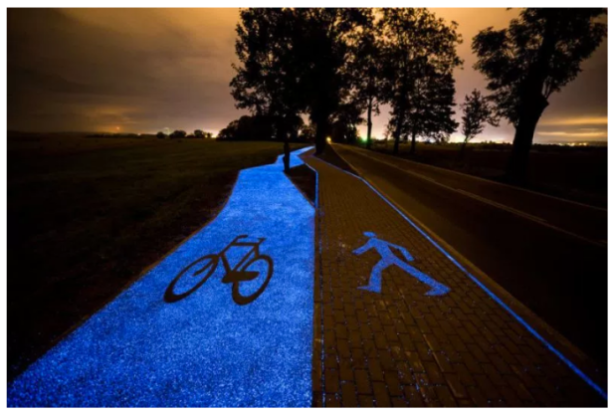
It is just a matter of time before more photoluminescent cycle paths appear in countries across the world. Studio Roosegaarde has already received enquires from Dubai, China and Turkey. This innovative project is part of a larger smart roads project in collaboration with Heijmans to create safer, more efficient roads using solar energy. I will write more about this important project in a future post, right here on Artists & Climate Change’s Renewable Energy Artworks monthly series.
 About Artists and Climate Change:
Artists and Climate Change is a blog that tracks artistic responses from all disciplines to the problem of climate change. It is both a study about what is being done, and a resource for anyone interested in the subject. Art has the power to reframe the conversation about our environmental crisis so it is inclusive, constructive, and conducive to action. Art can, and should, shape our values and behavior so we are better equipped to face the formidable challenge in front of us.



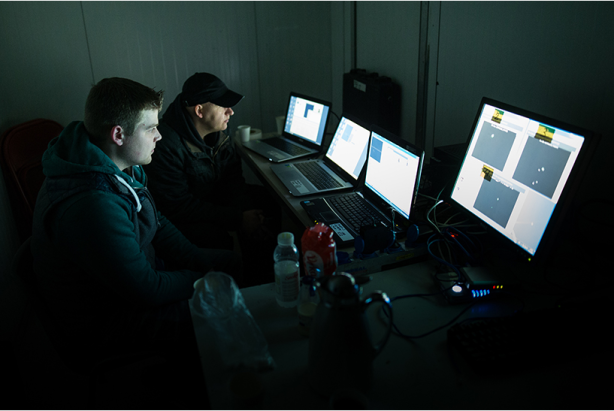



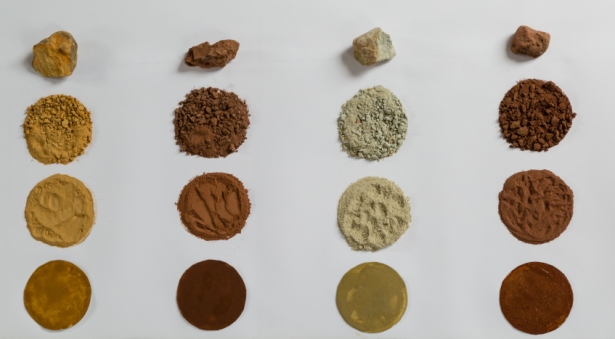



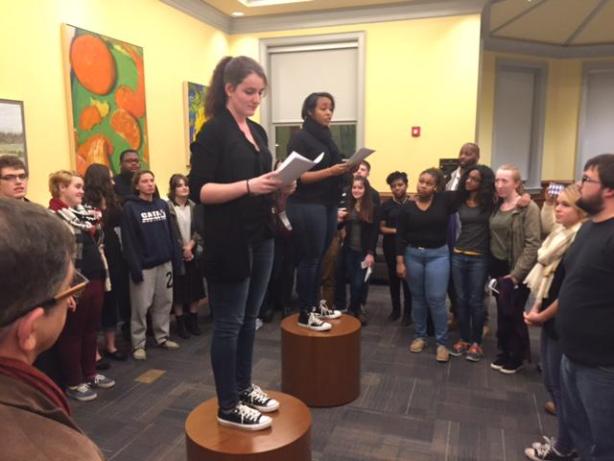


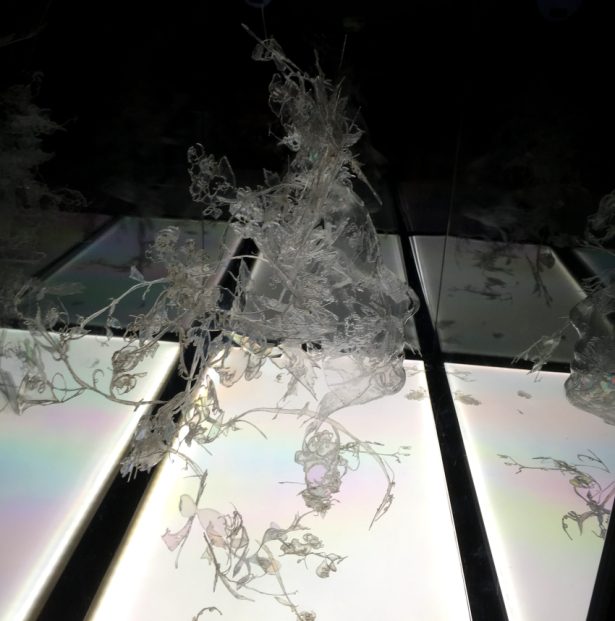
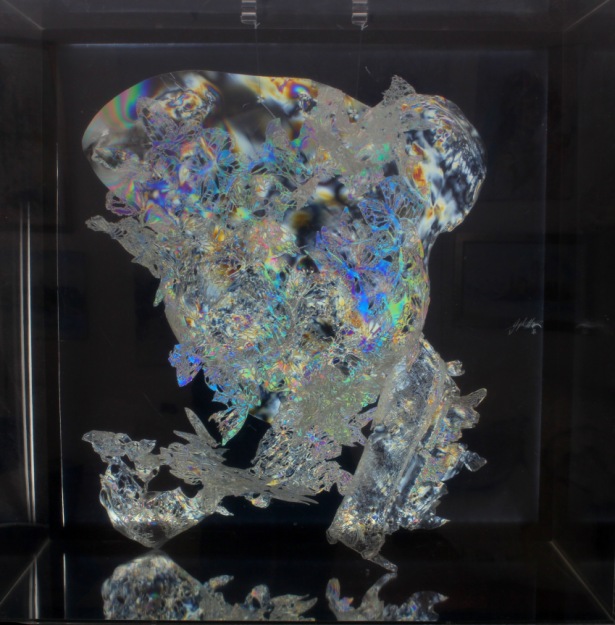


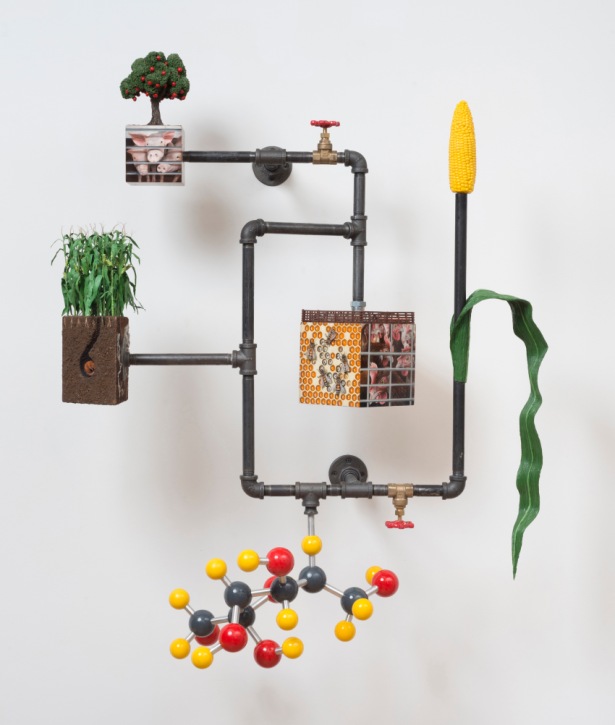
















 Alfred Russel Wallace (1823-1913) was a British naturalist regarded as a pre-eminent collector and field biologist of tropical regions in the 19th century. He was an explorer, geographer, anthropologist, biologist and writer.
Alfred Russel Wallace (1823-1913) was a British naturalist regarded as a pre-eminent collector and field biologist of tropical regions in the 19th century. He was an explorer, geographer, anthropologist, biologist and writer. A Taxonomy of Palm Oil, installation by Anna-Sophie Springer and Etienne Turpin, as part of the exhibition “
A Taxonomy of Palm Oil, installation by Anna-Sophie Springer and Etienne Turpin, as part of the exhibition “
 Performers from the Art not Oil coalition calling for an end to BP sponsorship at the British Museum September 2016. Photo by Anna Branthwaite, image courtesy of Art Not Oil.
Performers from the Art not Oil coalition calling for an end to BP sponsorship at the British Museum September 2016. Photo by Anna Branthwaite, image courtesy of Art Not Oil.
